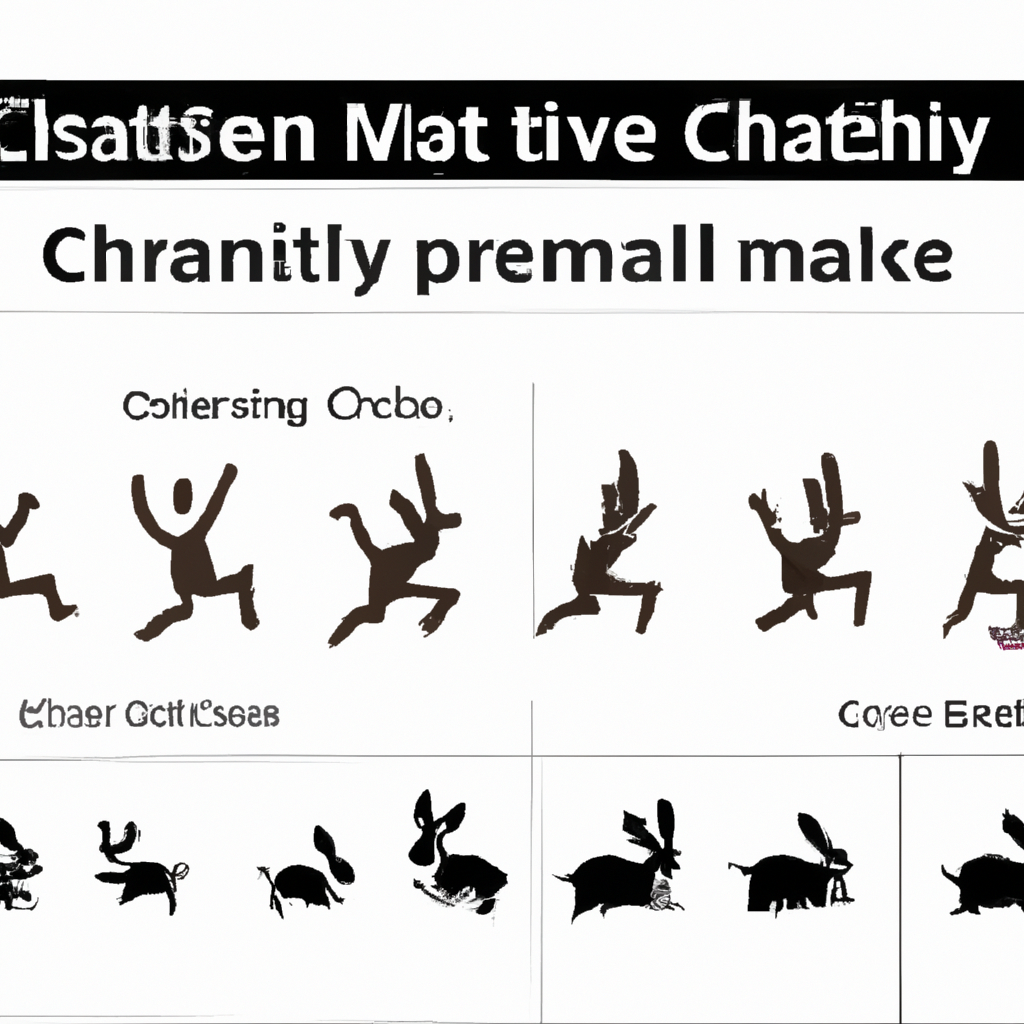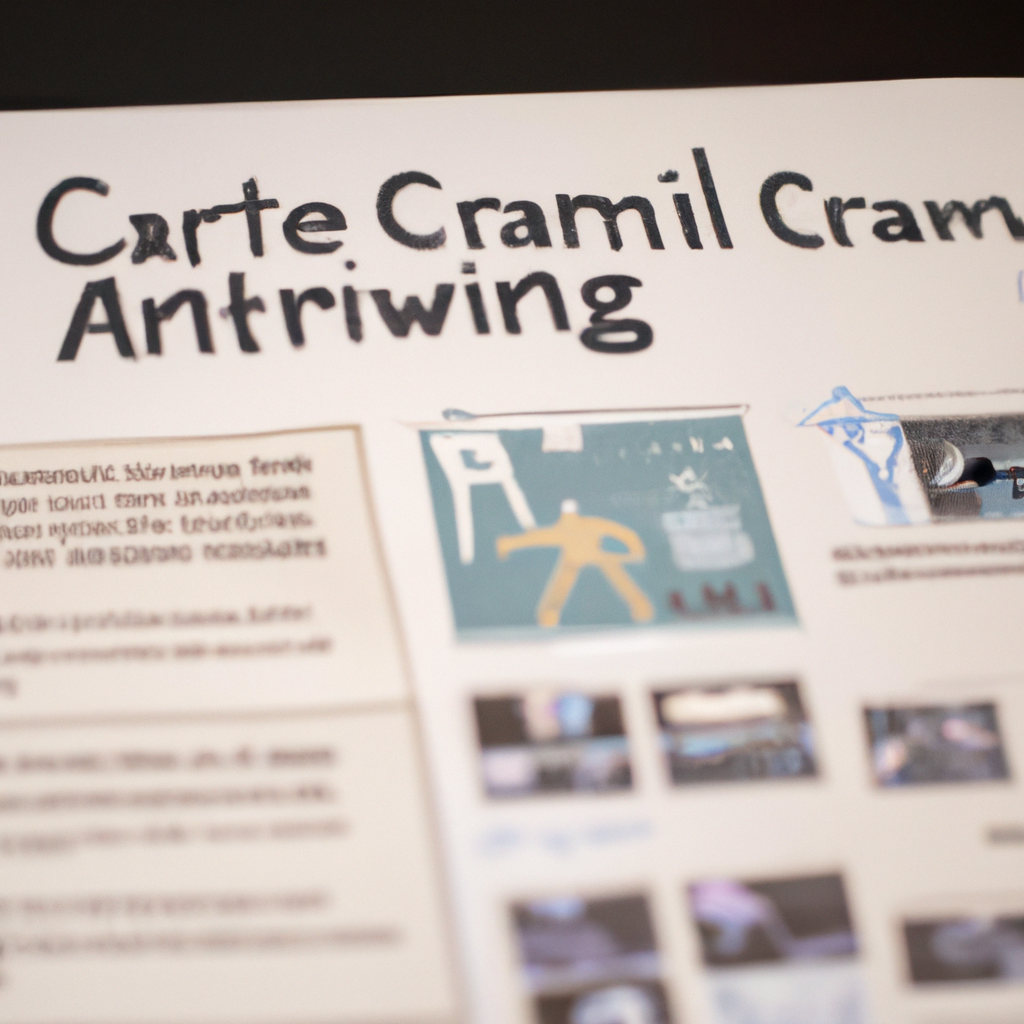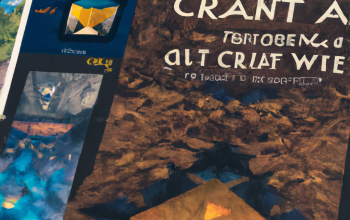Welcome to the intriguing world of crafting game animation, where creativity meets design and presentation to bring virtual characters to life! In this article, we delve into the fascinating realm of character movements and effects – the essence of making gaming experiences come alive. With a neutral tone, we explore the intricate process of animating game characters, unraveling the secrets behind captivating movement and stunning visual effects. So, fasten your seat belts and get ready to uncover the secrets of animators, the unsung heroes who breathe life into the virtual personas we adore. This article promises to ignite your imagination and shed light on the craft of game animation like never before.

Designing Character Movements: A Creative Approach to Crafting Game Animation
Designing Character Movements
When it comes to crafting game animation, a creative approach is essential for designing character movements that captivate players and enhance their gaming experience. Whether it’s the graceful swaying of an adventurer’s cloak or the powerful strides of a mighty creature, character movements can greatly influence the overall feel of a game. Here, we delve into some unique strategies to bring your characters to life:
1. Build a Strong Foundation: Before diving into the intricate details of character movements, it’s crucial to establish a strong foundation. Start by studying the character’s persona, backstory, and abilities. By truly understanding their essence, you will be able to create movements that align perfectly with their personality and enhance the player’s connection.
2. Observe and React: To achieve realistic character movements, take inspiration from the real world. Observe how different creatures and objects move in various environments, from the mesmerizing flutter of a butterfly to the powerful strides of a lion. Then, add a touch of creativity by adapting these movements to suit your character’s unique traits. Keep in mind that unexpected or exaggerated movements can inject an element of excitement into the game, making it more engaging for players.
Enhancing Player Experience: Strategies for Presenting Character Movements and Effects
Strategies for Presenting Character Movements and Effects
Immersion is key when it comes to enhancing the player experience, and one major aspect of this is how character movements and effects are presented. Captivating visuals and smooth animations can make a world of difference, leaving players mesmerized by the game’s atmosphere. Here are a few strategies to consider when aiming to take your player’s gaming experience to the next level:
- Fluid Motion: Implementing realistic and fluid character movements will make the gameplay feel more natural and responsive. Pay attention to the transition between different actions to ensure seamless gameplay flow.
- Impactful Effects: Enhance the overall sensation of gameplay by incorporating eye-catching effects. Whether it’s magical spells, powerful explosions, or stunning environmental transformations, visually captivating effects can leave players in awe.
- Dynamic Camera Angles: Experiment with camera angles to offer players unique perspectives of their character’s movements and actions. Consider adjusting the camera to add depth or showcase important moments during gameplay, immersing players further into the virtual world.
Remember, the goal is to create an immersive experience that captivates players from start to finish. By integrating these strategies into your game development process, you’ll be able to engage players at a whole new level, keeping them hooked and eagerly awaiting their next adventure. Pay attention to the details, and watch as your game comes alive with mesmerizing character movements and stunning effects!
Mastering Timing and Fluidity: Expert Techniques for Creating Engaging Game Animation
When it comes to game animation, timing and fluidity are crucial elements that can make or break the player’s experience. As developers, we strive to create animations that not only look visually appealing but also feel seamless and responsive. In this section, we will explore some expert techniques that will help you master the art of timing and fluidity in game animation, taking your creations to the next level.
The Power of Anticipation
Anticipation is a powerful tool that can add depth and impact to your game animations. By exaggerating the movement leading up to an action, you can build anticipation and create a more engaging experience for the player. Think of a character winding up before delivering a powerful punch – the moment of anticipation creates a sense of tension and excitement that enhances the overall impact. Remember to:
- Gradually increase the speed and intensity of the anticipation
- Use squash and stretch techniques to exaggerate the movement
- Ensure the anticipation movement is in sync with the action it precedes
Seamless Transitions
Fluidity in animation is all about creating smooth and seamless transitions between different actions or states. The goal is to make the animation feel natural and connected, avoiding any jarring or abrupt shifts that can break immersion. To achieve this, pay attention to:
- Using easing techniques such as slow in and slow out to create more organic transitions
- Ensuring a consistent sense of weight and momentum throughout the animation
- Adding subtle secondary animations to enhance realism and fluidity
Mastering timing and fluidity in game animation requires careful attention to detail and a creative mindset. By understanding the power of anticipation and focusing on creating seamless transitions, you can elevate your animations to captivate players and enhance their overall gaming experience.
Bringing Characters to Life: Recommendations for Designing Convincing and Expressive Character Movements in Games
Delving into the world of character design in games is like embarking on an artistic journey where imagination meets technology. Creating convincing and expressive character movements is the key to immersing players in the game’s narrative and enhancing their overall gaming experience. Here are some recommendations to help you breathe life into your game characters:
- Study Anatomy: Understanding human and creature anatomy is paramount to designing realistic movements. Pay attention to body proportions, joint movements, and muscle dynamics. This knowledge will enable you to accurately depict the characters’ motions and convey their emotions effectively.
- Observe Real-life Interactions: Carefully observe how people and animals interact with their surroundings. Take note of their gestures, postures, and facial expressions. Translating these observations into your character animations will add a sense of authenticity and relatability to their movements.
- Don’t Neglect Secondary Motions: While focusing on primary character movements is essential, remember to incorporate secondary motions as well. These include clasping a sword, swaying clothes, or hair movements. Attention to these details adds depth and plausibility to your character’s actions.
- Showcasing Personality: Characters in games have unique personalities, and their movements should reflect their traits. A mighty warrior might have confident strides, while a timid mage may display subtle, cautious movements. Ensuring that character animations align with their personalities will enhance the players’ connection with the game world.
- Iterative Process: Designing compelling character movements requires patience and constant refinement. Test and iterate your animations to achieve that perfect balance between realism, expressiveness, and fluidity. Solicit feedback from peers or playtesters to gain diverse perspectives and improve your character animations.
- Embrace Technology: Utilize advanced animation tools and techniques to push the boundaries of character design. Motion capture technology, procedural animation, and physics simulations can bring unprecedented realism and dynamism to your characters’ movements.
Future Outlook
And that concludes our journey into the fascinating world of crafting game animation! From the meticulous design process to the captivating presentation of character movements and effects, we have explored the endless possibilities that lie at the intersection of art and technology.
By delving into the creative minds of game animators, we have uncovered the intricate steps involved in breathing life into virtual characters, transforming pixels into personalities. We have witnessed how careful attention to detail, fluid movements, and seamless transitions can transport players to immersive worlds, where their every action feels natural and captivating.
Throughout this article, we have highlighted the importance of striking a balance between technical prowess and artistic brilliance. We have witnessed the incredible power of animation to not only engage players but also evoke emotions and drive the narrative forward.
Whether it’s an epic battle scene that leaves us in awe, a playful dance routine that brings a smile to our faces, or a simple gesture that reveals the inner workings of a character’s soul, game animation is a medium that knows no boundaries.
As we bid adieu to this enchanting topic, we hope that our exploration has sparked your curiosity and given you a glimpse into the vast world of game animation. We encourage you to delve deeper, embrace your creativity, and let your imagination run wild as you embark on your own animated journeys.
In the end, crafting game animation is not just about pixels and polygons; it’s about storytelling, expression, and pushing the boundaries of what is possible. So go forth, aspiring animators, and create worlds that will captivate and inspire players for generations to come.
Video game animation is often overlooked when it comes to modern gaming experiences. However, crafting an animation through proper design and presentation of character movements and effects can be an integral part of creating an immersive and engaging game world.
As with any art form, the creation of game animation begins with concept. There should be an idea of what particular character animation and effects should look achieve. The most significant aspects of crafting game animation involve creating believable character movements and the effects that bring characters and their environment to life.
Creating realistic character motion and emotions begins with traditional character design techniques. Whether it is a humanoid or non-humanoid character, it should have movements that are based on real-world physics and movements. This means that if a character is running, the speed and body movements should indicate the character’s physical abilities and shape. Additionally, the environment in which the character appears in should influence how the character is animated. For example, a character running on grass should move differently than a character running on a rocky terrain.
In terms of character emotions, the animations should be based on body language. This means the characters should have gestures that indicate what they are feeling and thinking. This character animation should be varied and believable depending on the context of the scene.
The effects of a game are important to the overall presentation of the animation. Effects such as lighting, smoke, water, explosions, and particle systems can all be used to bring the character and environment to life. These effects can be used to emphasize character motion as well as add atmosphere and drama to certain scenes.
In terms of crafting game animation, proper design and presentation of character movements and effects can be essential to an immersive and engaging gaming experience. Careful consideration should be made to the design of motion as well as the effects that bring characters and their environment to life. It is through this thoughtful design and presentation that gaming animations can be a unique and creative way to explore a video game world.



